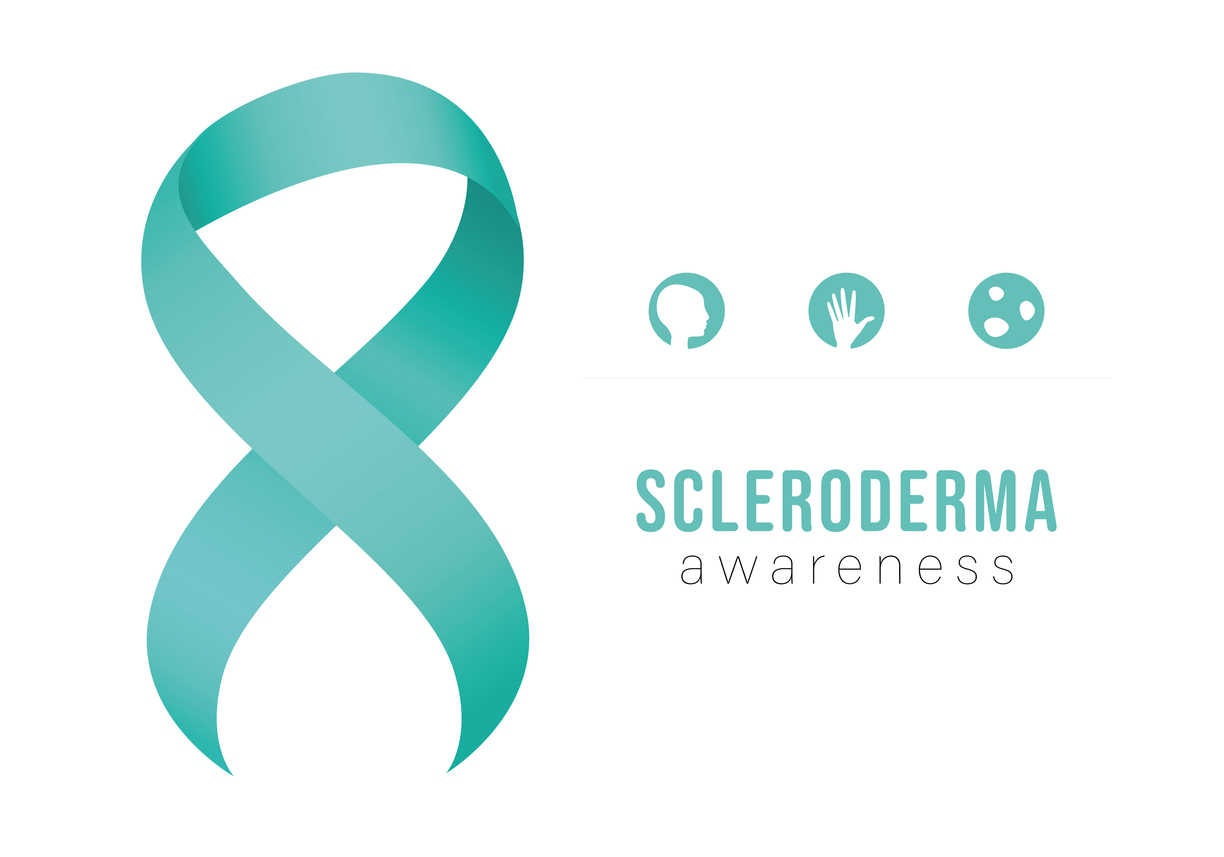
June is recognized as Scleroderma Awareness Month, and June 29 in particular is recognized as World Scleroderma Day. Scleroderma is a rare and chronic autoimmune disease that affects the connective tissues and vascular system of the body.
Scleroderma can be localized, producing excessive collagen in the skin (the hardening and tightening of the skin), or it can be systemic, affecting the internal organs.[1] The effects can range from mild to life-threatening, depending on which part of the body is affected and the extent it is affected.[2] There is no cure for this terrible rheumatic disease.
Researchers still do not know the cause of scleroderma, but it is thought to involve the overproduction of collagen. Even though there is no cure for this disease, there are many effective treatments, depending on which part of the body is impacted. 250 people out of every 1 million are diagnosed with a form of scleroderma. It is most commonly diagnosed in women (four times more common in women than in men) between the ages of 35 to 55, but there is also a pediatric form of the disease.[3] Reynaud’s syndrome (which causes spasms in the small blood vessels in the fingers and toes, limiting blood flow) and Sjogren’s syndrome (which manifests with dry eyes and mouth) are two other autoimmune diseases that are common in patients with scleroderma.[4]
The main objective of World Scleroderma Day is to spread awareness about the disease. Scleroderma is a complex condition that affects various organs and can have a significant impact on a person’s physical and emotional well-being. By raising awareness, the day aims to improve early diagnosis rates, increase understanding among the general public, and combat misconceptions surrounding the disease. Moreover, it seeks to encourage open conversations about scleroderma and create a supportive environment for those affected, fostering a sense of community and understanding.
World Scleroderma Day serves as a beacon of hope for individuals living with scleroderma and their families. It provides a platform for patients to share their stories, find support networks, and connect with others who are going through similar experiences. By highlighting the challenges faced by scleroderma patients, the day encourages empathy and compassion, fostering a sense of unity and solidarity among communities worldwide.
If you’d like to learn more, Johns Hopkins Scleroderma Center provides a list of patient resources, and you can research ways to get involved in the fight against scleroderma by visiting the website of the National Scleroderma Foundation.
[1] Id. Systemic scleroderma can impact the digestive tract, impact the heart and lungs (including scaring of the lung tissues), and can cause an increase in blood pressure in the circulation between the heart and lunch (pulmonary hypertension), and irregular heartbeats resulting in heart failure.
[2] Id.
[3] Id.
[4] Id.